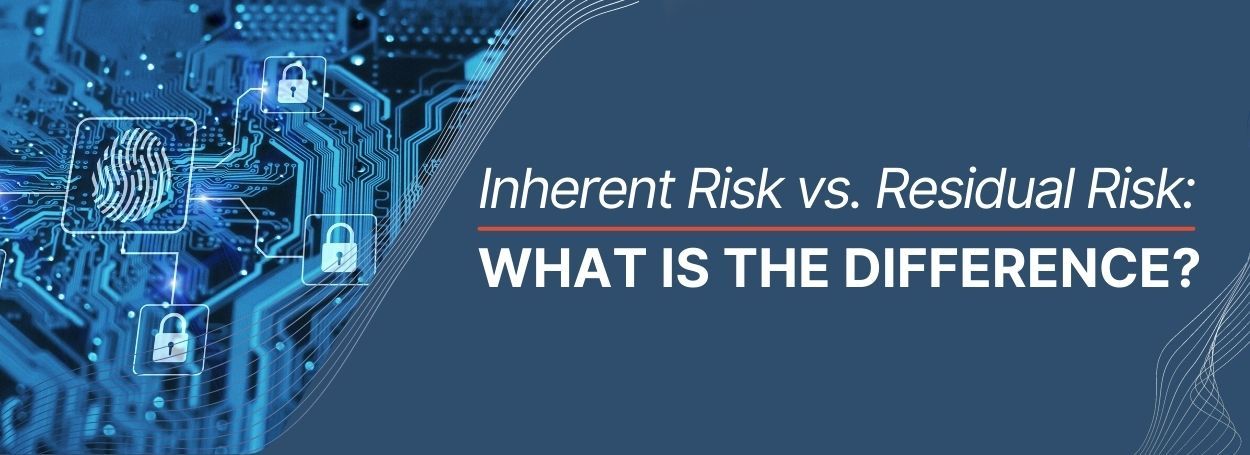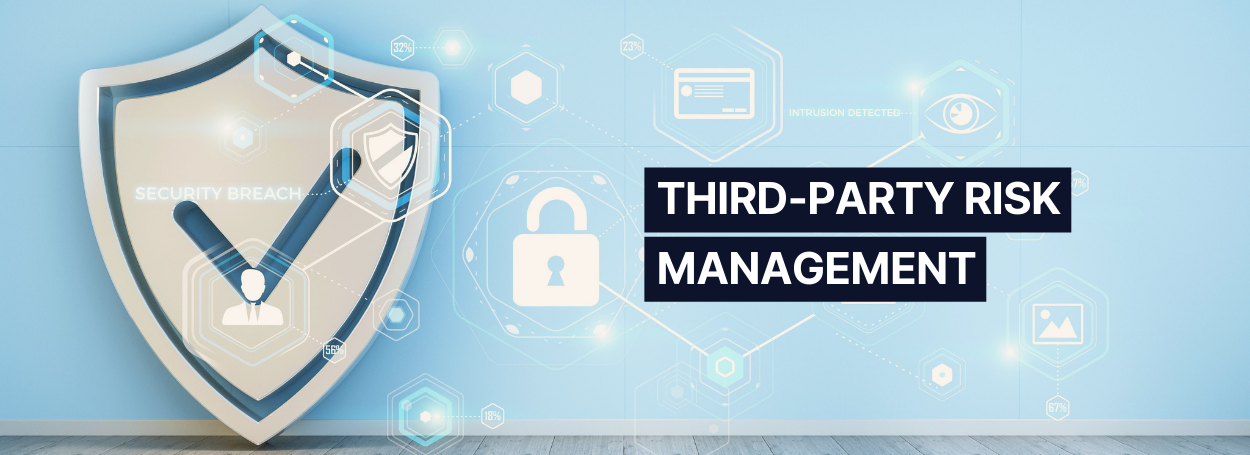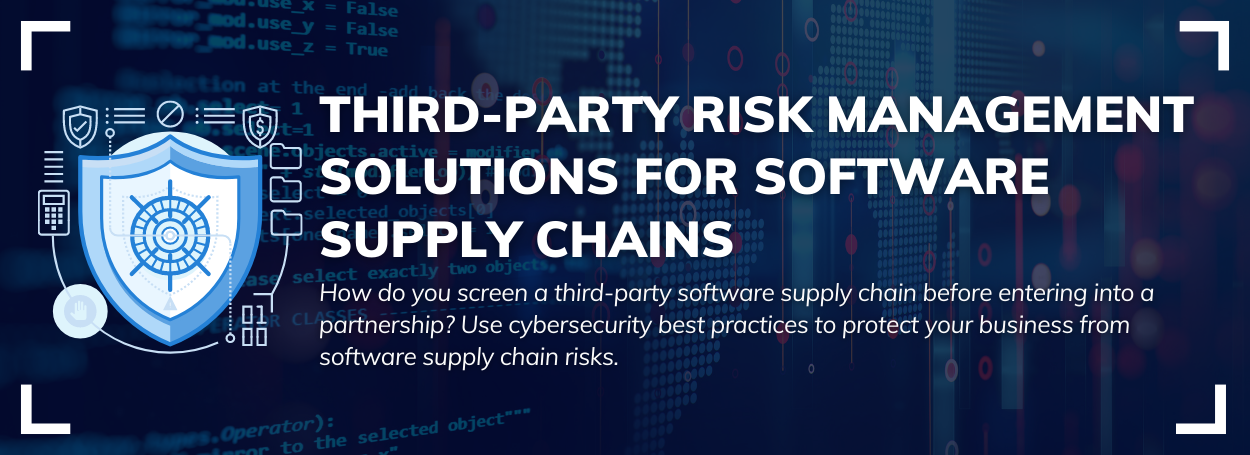What is Supplier Risk Management?

Working with third-party vendors and suppliers is necessary for all companies regardless of their industry, even more so today where the supply chain is supported and protected by Software-as-a-Service (SaaS) solutions.
The risks faced by third parties are also risks for your company, as you depend on their sourcing to a greater or lesser extent.
Organizations invest in supplier risk management (otherwise referred to as supply chain risk management, third party risk management, or vendor risk management) to avoid supply chain disruptions, reputational damage, financial losses, and workflow halt.
But what precisely is supplier risk management, and how should it be treated in relation to your overall Enterprise Risk Management (ERM) program? That’s what we’ll address here today.
What is Supplier Risk Management?
Supplier risk management involves identifying, controlling, and potentially mitigating risks to your organization and your business continuity caused by your company’s supply chain.
Supplier risk is a type of third-party risk related to supply chain vendors contracted by your organization to procure goods or services critical to their business functions.
Unmitigated supplier risk could result in catastrophic business disruption in some cases, and therefore, must be given the utmost priority for your organization.
For example, suppose a SaaS provider who facilitates much of your business processes suffers a cyberattack. In that case, your business could suffer costly downtime that it can not afford.
Some risks depend primarily on the supplier’s internal controls and your due diligence in assessing them. Others are impossible to mitigate, such as natural disasters, and must be planned for through business continuity and disaster recovery planning.
The supply chain lifecycle is thoroughly analyzed during the risk assessment process to determine all possible risks that may affect your company. Then, solutions are determined to mitigate those risks.
A supplier risk management program is a specialized approach to vendor risk management. It evaluates the supplier and their infrastructure, including their supplier network, information security, and supplier performance, to calculate the level of risk associated with the relationship.
Common Types of Supplier Risk
Below are some of the most common supplier risks facing organizations today.
Cybersecurity and Data Privacy Risks
2021 has been a year marked by the rise in cybercrime worldwide, and companies without robust cybersecurity programs are increasingly at risk from these threats.
For example, ransomware or DDoS attacks can take your supplier’s entire IT infrastructure offline, rendering it unable to continue operations. A loss like this could make short work of crippling an organization’s profitability.
In addition, new Ransomware-as-a-Service (RaaS) attacks also present data breach threats, so you can be impacted when sharing information with suppliers without adequate information security measures.
Compliance and Regulatory Risks
Also, you must ensure that your third-party vendors and suppliers can comply with the regulations and standards you are subject to, especially when handling sensitive information. Their non-compliance is your non-compliance.
Their non-compliance and violation of laws affect your company. They can put you in a delicate situation with your customers and any regulatory agencies who have oversight of your operations.
Financial and Reputational Risk
While typically a secondary loss after a cybersecurity incident or compliance infraction, financial and reputational risk is also a significant concern.
Financial risks will always be present in a supplier relationship. When there is a supply chain disruption, there may also be a business disruption which, as mentioned before, could translate into significant financial losses.
Reputational risks can also occur if it becomes public that your organization suffered a significant loss due to a failure in your supply chain. And in many cases, regulations require public disclosure if a loss passes a particular threshold.
Thus, it is vital to consider these risks when selecting suppliers, as they can be associated with you and your reputation.
How to Evaluate Supplier Risk
Evaluating supplier risks before engaging in a partnership with new suppliers is crucial to mitigating associated risks.
If you’re looking to create new supplier relationships with a vendor, you should perform adequate due diligence to prevent future threats to your business.
Within this process, you can consider the following steps:
#1 Risk Identification
The first step of any supplier risk evaluation is determining the scope of your vendor relationship and the potential risks associated with it.
An internal audit of all your vendors can help you get started. Each vendor has risks inherent to their roles, and this initial process should be able to sketch your supplier risk landscape.
#2 Risk Assessment
During the second phase, you should categorize and determine the impact of any supplier’s risks. These risks must be assigned a severity level and weighed against your risk appetite and tolerance levels.
You will also need to determine the mitigation measures necessary to mitigate each of these risks, whether by your internal controls or those of your vendor.
#3 Continuous Risk Monitoring
After implementing these controls and evaluating the residual risk that remains, you should plan to monitor existing and emerging risks periodically.
This process should be outlined in the contract so that each party is aware of the expectations during the supplier relationship and held accountable for their responsibilities in the partnership.
Vendor360 Can Help You Manage Supplier Risk
Supply chain risk management is one of the core components of an overall ERM strategy, and putting your vendor risk management program into action may be a daunting task when a growing company is relying on spreadsheets and manual procedures.
Vendor360 is a comprehensive and customizable third-party and supplier risk management platform that collects vendor data, automates assessments, and gives you greater control and visibility into your vendor risk management process.
It can assist you in expediting pre-contract risk analysis for new vendors by distributing questionnaires to several internal teams and managing inherent risks at each vendor’s engagement, product, and service levels.
With Vendor360, you can manage assessment progress, set due dates, and verify the status of questionnaires throughout your third-party portfolio. The platform also provides a simple user interface with extensive automation and analytics.
Book a demo to learn how Vendor360 can streamline your supplier risk management workflows.


